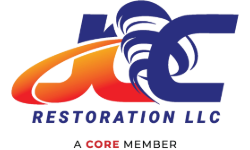Spring showers bring more than just flowers. They can also create the perfect conditions for mold to thrive in your home. Mold loves damp environments, and with the extra moisture that spring rains bring, it’s no surprise that homeowners find unexpected mold infestations during this time of year.
Mold growth is not just a nuisance. It can pose significant health risks to your family, triggering allergies and exacerbating respiratory conditions. It’s important to tackle mold problems quickly to keep your living environment safe and comfortable. Knowing how to identify and remove mold effectively will help ensure it doesn’t make a comeback.
With a few practical tips and a bit of knowledge, you can manage mold issues caused by spring rainfall. Whether you’re dealing with a minor patch or a larger infestation, understanding the best methods for mold removal is essential. By being proactive, you can protect your home and health all season long.
Understanding the Dangers of Mold After Spring Showers
Mold poses several health risks, particularly after spring showers when conditions can encourage its growth. Mold exposure often leads to allergies, with symptoms like sneezing, itching, and skin irritation. For individuals with asthma, mold can trigger attacks, making breathing difficult and life uncomfortable. Long-term exposure to mold may also lead to more severe health issues, especially for young children, the elderly, and those with weakened immune systems.
Spring showers contribute to mold growth by introducing additional moisture into homes. This extra moisture can infiltrate living spaces through leaks, condensation, and insufficient ventilation. If this moisture dries slowly or accumulates, it becomes a perfect breeding ground for mold spores, allowing them to spread and thrive. Understanding how mold grows after spring showers can help you take steps to reduce these risks and maintain a healthier home environment.
Identifying Areas Prone to Mold Growth
Certain areas in your home are more vulnerable to mold growth, especially after wet weather. Bathrooms and kitchens are common hotspots due to their regular use of water. Basements, which are often dark and damp, also offer ideal conditions for mold. Additionally, spaces like attics can harbor mold if there is a roof leak or poor ventilation.
It’s important to recognize the warning signs of hidden mold infestations. Unexplained musty odors, discoloration on walls or ceilings, and peeling paint can indicate mold’s presence. Mold can also lurk out of sight, behind drywall or under carpets, making regular inspections crucial. Identifying these areas and signs early allows for prompt action, preventing small issues from turning into larger, more costly problems. By staying vigilant, you can ensure that mold remains under control in your home.
Effective Mold Removal Techniques
Dealing with mold promptly is essential to prevent it from spreading throughout your home. For smaller, less severe cases, you can tackle mold removal on your own. Begin by wearing protective gloves and a mask to avoid direct contact with mold and its spores. Use a mix of water and mild detergent or a specialized mold remover to scrub away minor mold patches from hard surfaces like tiles and glass. Rinse thoroughly and ensure the area dries completely to prevent mold from returning.
However, some situations require professional help. Extensive mold growth, structural damage, or mold appearing in hard-to-reach areas can indicate a deeper issue that needs expert attention. Professionals have the tools and experience to safely and effectively remove mold, ensuring it doesn’t recur. Knowing when to call for help can save time, money, and protect your home’s structural integrity.
Preventing Mold Reoccurrence
Once mold is removed, it’s crucial to implement strategies to keep it from coming back. Moisture control is key. Use dehumidifiers to reduce humidity levels, especially in damp areas like basements and bathrooms. Repair leaks promptly—whether they’re from a leaky roof, plumbing, or windows. Also, ensure that your home has good ventilation, especially in high-moisture areas. Exhaust fans in kitchens and bathrooms can help dissipate moisture.
Regular maintenance and monitoring are also important. Conduct routine checks for signs of moisture and mold, addressing any issues promptly. Keep gutters clean and direct water away from your home’s foundation. By maintaining an environment that is less favorable for mold growth, you can protect your home all year round.
Conclusion and CTA
Understanding how to effectively deal with mold and taking proactive steps to prevent it can save you from larger problems down the line. Spring showers often set the stage for mold issues, but with the right knowledge and actions, you can keep your home healthy and comfortable.
If you’re struggling with mold or need expert advice on handling larger infestations, JCC Restoration LLC is here to help. Our team specializes in comprehensive mold removal services tailored to your needs. Reach out to us today to ensure your home remains a safe haven, free from mold and its harmful effects.
